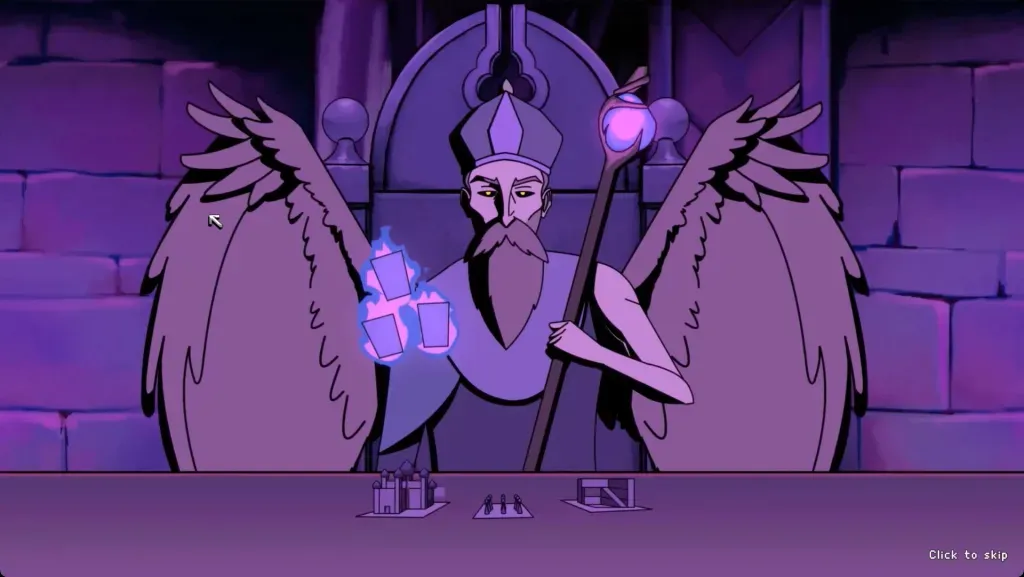Tips and tricks for 9 Kings
9 Kings is a delightfully satisfying, deck- and base-building, tower defense-like game. BigFriendly.Guide's tips and tricks for beginner's will help you take those simple building blocks and have some truly wild runs.

9 Kings is a delightfully satisfying, deck- and base-building, tower defense-like game. Which is somehow both a confusing jumble of words and genres, and manages to undersell the game.
It’s deceptively simple — you get cards that represent units or structures, you place them on a 3 by 3 grid, and then you watch those units battle it out against an enemy’s army. And then you repeat that 30 or so times until you win a run.
The deeper satisfaction of 9 Kings, though, comes from just how much more you can do with those simple building blocks when you put in just a little bit of planning. This BigFriendly.Guide will set you up for success in 9 Kings with tips and tricks to get you started.
Your cards Draw from both you *and* your enemies

Before anything else, let’s talk about the pool you draw your cards from. Each turn — the time between years and battles — you’ll take the cards in your hand and place them on the grid until you have two cards left. This is how you’ll add new units and how you’ll upgrade existing units.
After each year/battle, you’ll get loot — you can pick one of three cards drawn from your pool. Here’s the part I missed at first, though: that pool of cards includes the cards associated with the King you’re playing along with the Kings you’re playing against. That means, as the King of Nothing fighting against the Kings of Blood and Progress, you’ll be drawing from Nothing’s, Blood’s, and Progress’ decks.
Technically, you’re playing against two (and then three) enemies and a rebellion of your own armies, so even your own King’s pool is kind of from the enemy, too.
But since the pools depend on your enemies, you’ll have to …
Wage war and make peace wisely
At year 8, you can add a new King as an enemy — which adds a new deck to your loot pool (see above) — bringing your enemies up to four. In year 23, you can choose one of those Kings (outside of the rebellion) to make peace with.

You’re doing two things here. First, like I mentioned above, you’re adding cards to your pool. This opens up a bunch of new options for you with new synergies and game-breaking opportunities. When you make peace, you’re removing those cards from the pool (any units on the board or cards in your hand from that King will remain).
Second, though, and a little more pragmatically, you’re either adding a new enemy or removing one. If you’re army is struggling against a particular King’s units, you can take those out of the rotation for the rest of the run. Even more importantly, this removes them and their champion as a potential option for the run's final boss.
Your castle doesn’t have to -- and probably should'nt -- go in the middle of the grid

There is one card that’s purely determined by your starting King, though — your main tower (like the Castle or Pagoda). This is always the first card you place. That makes it tempting to place it in the center of your grid so you can place your army around it, but that’s rarely the best place for it.
Putting it in the middle blocks a bunch of adjacency bonus options (more on this in a second) and takes up a really valuable spot in your grid. And, more importantly, your tower’s ranged attacks aren’t affected by where it is in your grid. So leave that center plot open for …
Plan ahead for adjacency bonuses

Several of the support-type plots — like the Farm, Forest, Cauldron, and even the Cemetery — apply their effects to the tiles adjacent to them. This means the plots in the four cardinal directions, and that means you’ll get a lot more benefit from a support card in the center of the grid, where it touches four plots, than one in the corner that only touches two.
If you leave gaps in your grid that will allow you to place these stacking support cards where they’ll give you the most benefit, your army will be stronger for it.
Speaking of stacking yearly benefits …
Place your King’s stacking card as early as possible
Most Kings have at least one card (and usually several) that gains or applies a benefit each year. To get the most out of these cards, get them placed early.
These include cards like like the Demon Altar (gains 0.5% stats for every allied unit killed in every battle), Mycelium (summons a spore every nine seconds that stack for the entire run), and the Dispenser (gains permanent attack speed for every gold piece you get).
Any card/plot that has an effect that builds up year after year will just keep getting stronger the longer it’s on the board. And any of them that add a percentage will compound. Getting these plots placed early gets them the time they need to become truly powerful.
Focus on quality, not quantity in 9 Kings
Early on, it’s tempting to fill your grid with as many plots as possible. And you can have your grid filled by Year 9. But that’s not the best way to play 9 Kings.

Placing a card on top of a plot that already holds that card — placing a Soldier card on top of a Soldier plot, for example — levels up the plot. Every plot can be leveled up twice, and leveling up will always give you more benefit that placing a second plot of the same type. Leveling up increases a plot’s stats and increases the number of units on that plot.
When you factor in things like bonuses from adjacent support plots and any upgrades you add to the plot (like Vampirism or Combustion), it’s entirely possible to win a run with only one unit on your board. And limiting your choices like that means you can focus your attention elsewhere, like …
Don’t discount weird cards
Some cards don’t feel super useful when you first draw them. Mycelium, for example, spits out little mushroom-snipers that don’t do much damage. The thing about Mycelium, though, is that those snipers stick around for the rest of your run. And that means that, by the end of the run, you’ll have a huge number of those snipers all picking away at your enemies. And that damage adds up fast.
Which is really just to say: experiment with the cards you get. Even if it’s not immediately clear how a plot or unit will be useful, try it out and see what it can do. If you’re lucky, you’ll find a new way to …
Try to break the game
9 Kings gets even better when you start to push its limits. It’s all well and good to have three plots of level 3 soldiers who can fight your enemies — and, if that works for you, great — but it’s way more interesting to have a single plot housing 150 boars that all deal poison damage, explode when they die, and resurrect into imps dealing even more damage and who, after 30 rounds of upgrades and stacking bonuses, defeat your opponents without taking any damage.
Mixing and matching adjacencies, stacking effects, and leveled-up units can yield some really exciting and novel results. And that's where 9 King's replayability really shines.

This post originally appeared on BigFriendly.Guide
Please pardon any formatting weirdness




